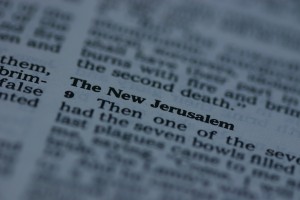
Both Christians and unbelievers are guilty of misusing Bible verses by ripping them from their original context.
If you have not read the first post in this series, please make sure to read it so you can catch the gist of what this series is about. Briefly stated, we must be sure to use the Bible properly rather than trying to make it say what we want it to say. So without further ado, let’s jump into another commonly misused Bible verse.
Commonly Misused Verse #2: Jeremiah 29:11
I can’t count the number of times I have heard this one misused in the past few years.
For I know the thoughts that I think toward you, says the LORD, thoughts of peace and not of evil, to give you a future and a hope. (Jeremiah 29:11, NKJV)
Many Christians love to recite this verse as though it is a promise for God that He only wants or plans the best for our lives. It is used in efforts to encourage the downtrodden. Once again, do you know the context of this verse? Do you know when and why these words were spoken and to whom they were spoken? Were they given as a divine promise to individual Christians? Let’s take a look.
The 29th chapter of Jeremiah makes it clear that these words are part of a letter written by Jeremiah to Jewish exiles living in Babylon under the rule of Nebuchadnezzar. Here are some of the verses in the immediate context.
For thus says the LORD: After seventy years are completed at Babylon, I will visit you and perform My good word toward you, and cause you to return to this place. For I know the thoughts that I think toward you, says the LORD, thoughts of peace and not of evil, to give you a future and a hope. Then you will call upon Me and go and pray to Me, and I will listen to you. And you will seek Me and find Me, when you search for Me with all your heart. I will be found by you, says the LORD, and I will bring you back from your captivity; I will gather you from all the nations and from all the places where I have driven you, says the LORD, and I will bring you to the place from which I cause you to be carried away captive. (Jeremiah 29:10–14, emphasis added)
This was a promise given to the Jewish people living in exile. The Lord used Babylon as His instrument of judgment, and the Jews were to live in the land of Babylon for 70 years. By comparing Jeremiah 25:11 with 2 Chronicles 36:21, we learn that the reason for this 70 year period of judgment was that the Jews had failed to keep the seventh year land Sabbath for 490 years. They were supposed to allow the land to lie fallow every seventh year, but had neglected to do so. Consequently, God removed them from the land for 70 years so that the land of Israel would lie fallow for the 70 years that the Jews owed to God.
While the Jews were in exile, God sent these encouraging words through a prophet named Jeremiah. This verse shows God’s plan for the Jewish people—plans of peace and of a future and hope. That is what this verse is about.
So is it appropriate for Christians to cite this verse as a promise from God to us? Not really. Yes, God does know the thoughts He has toward us, and ultimately in heaven, we will have a peaceful future and a hope. The idea that God promises to prosper all Christians is not what the Bible teaches, as shown in the following verses:
God told a man named Ananias that Paul (then called Saul) would soon visit him and that He would “show him how many things he must suffer for My name’s sake” (Acts 9:16).
After being beaten by the Jewish leaders, the apostles rejoiced “that they were counted worthy to suffer shame for His name” (Acts 5:41).
Paul told Timothy that “all who desire to live godly in Christ Jesus will suffer persecution” (2 Timothy 3:12).
Finally, Jesus told His disciples, “If they persecuted Me, they will also persecute you” (John 15:20).
Many other verses could be added to this list. The Bible does not promise us that we will be free from earthly trouble. In fact, the opposite is true. We are guaranteed that we will face persecution as believers. We can still experience joy and peace in the midst of these trials through the power of Christ. Eventually, we will have an unimaginably blissful future with Christ in the new heavens and new earth.
So although it is true that we will have a prosperous eternity, this verse was written for the Jews in exile, and we must keep the proper context in mind.
Thanks for reading! If you have enjoyed this post, please consider sharing it with your friends on facebook and/or twitter by clicking the appropriate button(s) below.

